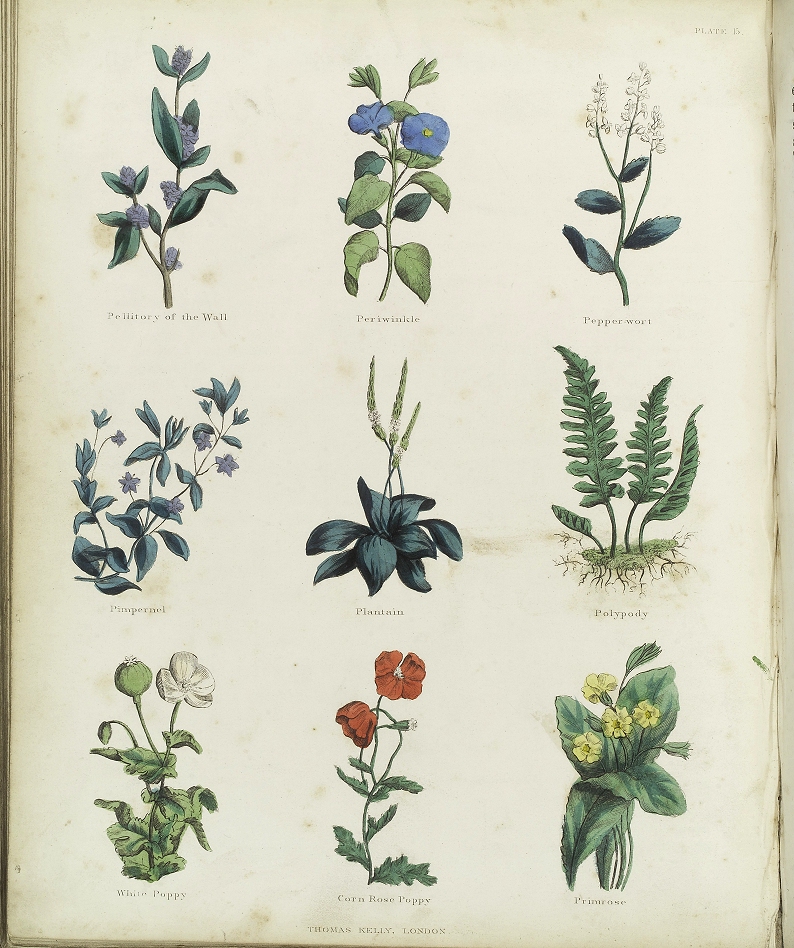- Dandelion
- Dandelion was prescribed to treat colds, boils, ulcers, dental problems, itching, jaundice and gallstones.
- Dill
- Digestive aid and gas remedy. Also a cure for hiccups. From Gilbertus Anglicus' Compendium of Medicine this treatment for squinacy (quinsy):
But if a postem be of phlegm, after his blood-letting and his purging, make him a gargle of sap from a hazelnut tree, dill, poppy, either the water that bark from a nut or mulberry tree has been seeped in, or the juice of bittersweet, with dried honeysuckle leaves and aloe.
- Elecampane
- Prescribed to treat coughs, bronchitis, asthma and indigestion.
- Fennel
- The ancient physicians prescribed fennel to treat infant colic, as an appetite suppressant and recommended the seeds to nursing mothers to boost milk production. Pliny believed that fennel was a cure for eye problems, including blindness. Hildegard of Bingen recommended fennel for treating colds, heart ailments and to aid in good digestion and body odor. Folk healers mixed fennel with strong laxatives such as buckthorn to counteract intestinal cramps.
- Fenugreek
- Fenugreek seeds mixed with water was used as a salve to soothe inflamed or irritated tissue. Internally, it was used to treat fever and digestion and respiratory ailments. Gilbertus Anglicus considered a plaster using fenugreek (femigreke) in combination with a gargle made of other ingredients to be somewhat of a cure-all:
Good for every postem both within a man's body and without: Take the root of hollyhock and lily roots and seep them in water. Then crush them with fresh grease and butter and add meal of flax seed (linseed) and fenugreek and snails and crush them together. And give him a gargle of vinegar that barley has lain in and water that pomegranate or sumac or roses or oak galls or lentils have soaked in.
- Garlic
- Greek and Roman physicians recommended garlic for infections, wounds, cancer, leprosy, heart problems, colds, and epilepsy among many other ailments. In the middle ages the upper class shunned the use of garlic, but the peasantry viewed it as a preventative medicine and cure-all.
- Horehound
- First used in ancient Rome as an ingredient in poison antidotes lead medieval Europeans to believe horehound provided protection from witches' spells. Hildegard of Bingen considered it one of the best herbs for colds. Galen was the first to recommend horehound for coughs and respiratory problems.
- Hyssop
- Prescribed for use in a tea for coughs, wheezing and shortness of breath and in plasters and salves for chest decongestion. Hildegard of Bingen recommended a meal of chicken stewed in hyssop and wine as a treatment for depression.
- Licorice
- Hippocrates recommended licorice for cough, asthma and other respiratory diseases. Hildegard of Bingen prescribed it for stomach problems.
- Mint
- Spearmint was the original medicinal mint and was used to aid in digestion and the treatment of gout. In Gilbertus Anglicus' Compendium of Medicine the following treatment is recommended for "stinking of the mouth":
If there be no rotten flesh, let the mouth be washed with wine that birch or mint has been soaked in. And let the gums be well rubbed with a rough linen cloth until they bleed. And let him eat marjoram, mint and parsley til they be well chewed. And let him rub well his teeth with the herbs he chewed and also his gums.
- Motherwort
- Used to treat heart palpitations and depression; later to stimulate contractions during childbirth.
- Myrrh
- Myrrh was valued primarily as an oral treatment for bleeding gums, mouth ulcers and sore throat. It was also used as an expectorant for colds and congestion.
Next page: Oregano - Yarrow
Photo credits: (Related Resources) (1) Peppermint, Otto Wilhelm Thome, Flora von Deutschland, Germany, 1885, PD-ART, Wikimedia Commons, (2) Plants and herbs from Culpeper's The Complete Herbal, Wellcome Library on Wikimedia Commons, Creative Commons CC BY 4.0

